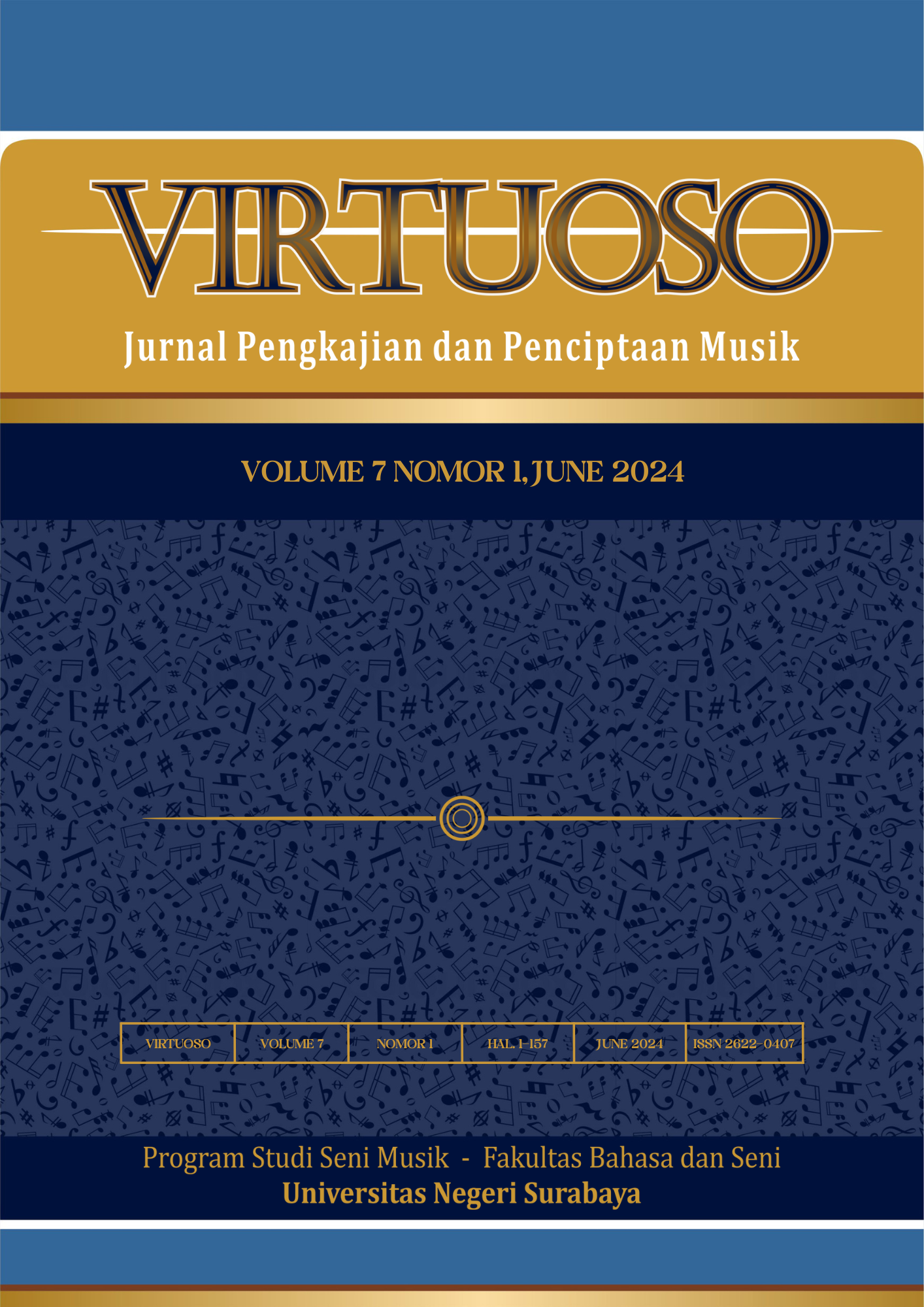A Critical Review: The Implementation of Spectrogram and Sonic Visualizer on The Performance Review of Classical Music
Main Article Content
Abstract
This Study examines the implementation of spectrogram and Sonic Visualizer tools in the performance analysis of classical music. Traditional methods of performance feedback often rely on subjective verbal criticism, which can be inconsistent and influenced by personal biases. This study highlights the limitations of these traditional approaches and the challenges posed by reliance on memory. Spectrograms and Sonic Visualizer provide objective, visual feedback that can reveal intricate patterns and details in musical performances not easily discernible through auditory perception alone. These tools offer precise feedback on pitch and timing, which is especially beneficial in educational settings. The study analyzes four key articles: Yasushi Ueda's investigation of tempo rubato in Chopin’s Nocturne Op.15-2, Cook & Leech-Wilkinson's guide to Sonic Visualizer, Garner's thesis on Schubert's Winterreise, and Gardiner and Latartara’s examination of Beethoven's "Hammerklavier" sonata. These studies demonstrate how features such as tempo and dynamic visualization, harmonic analysis, and beat detection aid performers in evaluating rhythmic accuracy, consistency, and interpretative choices. Moreover, the review identifies gaps in existing research, particularly the need for more comprehensive studies on the effectiveness of Sonic Visualizer across different classical instruments and its impact on performers' interpretative skills. The findings suggest that regular use of these tools can enhance performers' decision-making processes, creativity, and overall artistic growth. This study underscores the significant benefits of integrating advanced audio-visual tools into classical music performance analysis, providing a deeper understanding and more accurate assessment of musical interpretations.
Downloads
Article Details

This work is licensed under a Creative Commons Attribution-NonCommercial-ShareAlike 4.0 International License.
The copyright of the received article once accepted for publication shall be assigned to the journal as the publisher of the journal. The intended copyright includes the right to publish the article in various forms (including reprints). The journal maintains the publishing rights to the published articles.
References
Cogan, R. (1984). New images of musical sound. (No Title).
Cook, N., & Leech-Wilkinson, D. (2009b). Techniques for analysing recordings: an introduction.
Gardiner, M., & Latartara, J. (2007). Analysis, Performance, and Images of Musical Sound: Surfaces, Cyclical Relationships and the Musical Work. Current Musicology, 84.
Lavengood, M. L. (2020). The cultural significance of timbre analysis: A case study in 1980s pop music, texture, and narrative. Music Theory Online, 26(3).
McAdams, S. E., & Bigand, E. E. (1993). Thinking in sound: The cognitive psychology of human audition. Based on the Fourth Workshop in the Tutorial Workshop Series Organized by the Hearing Group of the French Acoustical Society.

